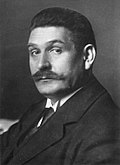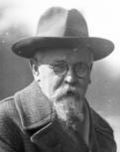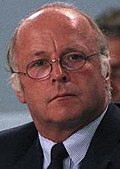Top Qs
Timeline
Chat
Perspective
Federal Ministry of Labour and Social Affairs
Federal ministry of the Federal Republic of Germany From Wikipedia, the free encyclopedia
Remove ads
The Federal Ministry for Labour and Social Affairs (German: Bundesministerium für Arbeit und Soziales,[a] pronounced [ˈbʊndəsminɪsˌteːʁiʊm fyːɐ̯ ˈʔaʁbaɪt ʔʊnt zoˈtsi̯aːləs] ⓘ; abbreviated BMAS) is a federal ministry of the Federal Republic of Germany headed by the Federal Minister of Labour and Social Affairs as a member of the Cabinet of Germany (Bundesregierung). Its first location is on Wilhelmstrasse in Berlin, the second in Bonn.

Remove ads
History
Summarize
Perspective
The Reich Ministry of Labour of the Weimar Republic was established on 13 February 1919 as the successor of the Labour Office (Reichsarbeitsamt) of the German Empire. The Social Democratic politician Gustav Bauer became the first Minister for Labour under Chancellor Philipp Scheidemann, whom he succeeded on 21 June that year. On the day of the Machtergreifung in January 1933, the German National politician and Der Stahlhelm leader Franz Seldte was appointed Minister for Labour in the Cabinet Hitler, a position he officially held until 1945, though the day-to-day affairs of the Ministry were managed largely by the State Secretaries Johannes Krohn (1933–1939) and Friedrich Syrup (1939–1945).
The West German Ministry for Labour was re-established in Bonn on 20 September 1949 with the Cabinet Adenauer I. According to the 1991 Berlin/Bonn Act it moved to its present seat in Berlin-Mitte in 2000, on premises formerly used by Goebbels' Propaganda Ministry and the East German National Front organisation.
During the Cabinet Schröder II from 2002 to 2005, the ministry had been dissolved and its responsibilities allocated to the Federal Ministry for Economics and Labour[2] and the Federal Ministry of Health and Social Security. Responsibilities were re-allocated once again when a new government was formed under Chancellor Angela Merkel following the Bundestag elections of 2005. The German name was changed from Bundesministerium für Arbeit und Sozialordnung to Bundesministerium für Arbeit und Soziales.
Remove ads
Ministers
German Reich (until 1945)

- Reich Ministers
Political Party: Centre SPD NSDAP Independent
Federal Republic of Germany (1949–present)
- Federal Ministers
Remove ads
Parliamentary State Sectretaries
- 1969–1974: Helmut Rohde (SPD)
- 1972–1976: Herbert Ehrenberg (SPD)
- 1974–1982: Hermann Buschfort (SPD)
- 1980–1982: Anke Fuchs (SPD)
- 1982: Rudolf Dreßler (SPD)
- 1982: Jürgen Egert (SPD)
- 1982–1991: Wolfgang Vogt (CDU)
- 1982–1984: Heinrich Franke (CDU)
- 1984–1989: Stefan Höpfinger (CSU)
- 1989–1992: Horst Seehofer (CSU)
- 1991–1998: Horst Günther (CDU)
- 1992–1998: Rudolf Kraus (CSU)
- 1998–2008: Gerd Andres (SPD)
- 1998–2002: Ulrike Mascher (SPD)
- 2002–2005: Ditmar Staffelt (SPD)
- 2002–2005: Rezzo Schlauch (Bündnis 90/Die Grünen)
- 2002–2009: Franz Thönnes (SPD)
- 2005–2009: Klaus Brandner (SPD)
- 2009–2013: Ralf Brauksiepe (CDU)
- 2009–2013: Hans-Joachim Fuchtel (CDU)
- 2013–2018: Gabriele Lösekrug-Möller (SPD)
- 2013-2025: Anette Kramme (SPD)
- since 2018: Kerstin Griese (SPD)
- since 2025: Natalie Pawlik (SPD)
- since 2025: Katja Mast (SPD)
State secretaries
As of May 2025,[update] The Secretaries of State are Leonie Gebers, Lilian Tschan and Michael Schäfer.
Building
The ministry is located within the former Reich Ministry of Public Enlightenment and Propaganda. For the building's interior courtyard, artist Daniel Buren was commissioned with his large-scale installation La Grande Fenêtre (2001).[4]
Notes
- Former German name: Bundesministerium für Arbeit und Sozialordnung. The English translation used by the ministry is the same.
References
External links
Wikiwand - on
Seamless Wikipedia browsing. On steroids.
Remove ads




























